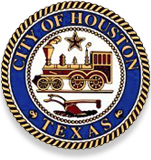Implementation Plan
 On September 29, 2010 Mayor Parker presented her administration's plan for implementing Proposition 1. This document explains the principles established by the administration and how Proposition 1 would create a dedicated pay-as-you-go fund for improving and maintaining Streets and Drainage, including capital improvements, ongoing maintenance, and compliance with federal/state water quality laws in our drainage systems.
On September 29, 2010 Mayor Parker presented her administration's plan for implementing Proposition 1. This document explains the principles established by the administration and how Proposition 1 would create a dedicated pay-as-you-go fund for improving and maintaining Streets and Drainage, including capital improvements, ongoing maintenance, and compliance with federal/state water quality laws in our drainage systems.
Proposition 1 - Funding Sources
-
Developer Impact Fees - Process defined in State Law which is similar to
City Council approval for water/wastewater impact fees - 11.8¢ id Ad Valorem Property Tax - Amount currently spent for streets and drainage
- Remittances from Metro, TxDot and other governmental sources
- Drainage Charge
Drainage Charge will be based on "Cost of Service"
-
Key determination will be actual "hard areas" (impervious surfaces) that generate
requirements for the drainage conveyance system - All property owners will pay full cost of service, no subsidizing
- Only exemptions will be those required by State Law
- Undeveloped land will not be charged a drainage charge
- Calculations will utilize publicly available digitized mapping data
Drainage Charge - Other Considerations
- Charge to be fixed for at least 10 years and will require 2/3 vote of City Council to increase
- Property owners will no longer be subject to individual assessments for street improvements
- Per Proposition 1, the fee will begin July 1, 2011
Drainage Charge - Residential Properties
- For curb and gutter streets - charge calculated to be $.032/sq foot/year of total "hard areas" (see example)
- For open ditch streets - charge calculated to be $.026/sq ft/year of total "hard areas" (see example)
- Charge differences reflective of requirements on the drainage conveyance system
-
HCAD defined data can be used as an approximation
- "Hard Areas" (or impervious surface) defined as "PRI" (example follows)
- To allow for driveways and other "hard areas" multiply PRI by 1.38
Residential Property Example
Curb and Gutter Street
- Typical lot size: 5,000 sq ft
- Typical house ground floor/garage/driveway: 1,900 sq. ft.
- Monthly charge: (1900 x .032)/12 = $5.07
Open Ditch Street
- Typical lot size: 5,000 sq ft
- Typical house ground floor/garage/driveway: 1,900 sq ft
- Monthly charge: (1900 x .026)/12 = $4.12
Estimate using HCAD Data
- PRI on HCAD page (typical): 1,376 square feet
- Allowance for all other hard surfaces: 38%
-
Monthly charge:
- Curb and gutter: (1,375 x 1.38 x .032) / 12 = $5.07
- Open ditch: (1,375 x 1.38 x .026) / 12 = $4.12
Drainage Charge - Commercial/Industrial/Institutional Properties
- Charge calculated to be $.032/sq ft x "hard areas"
- Commercial/Industrial/Institutional properties have ready access to "hard areas" on each property
Drainage Charge - All Property Types
- Available "hard area" information includes HCAD, GIS info and publicly available mapping data (Google Earth, etc.)
- Online verification and correction process will be put in place
- Transparent appeal process based on actual data for all property types to a neutral body
Process for Establishing Project Priorities
- Current 5 year CIP will be used until comprehensive street and drainage needs re-assessment is complete
-
Preparing needs assessment for streets:
- Based on technical evaluation
- Will use Pavement Condition Report (PCR)
- Presented to City Council in July 2011
-
Preparing needs assessment for drainage
- Based on technical evaluation
- Will use Comprehensive Drainage Plan done in 1999
- Plan being updated by Storm Water Enhanced Evaluation Tool (SWEET) currently under development
- Presented to City Council in July 2011
-
Oversight committee will advise on priorities and process
- Will appoint Committee with significant background in community development/infrastructure assessments and other stakeholders
- Appointees will not be employees of the City
- Appointees will not be drawn from Contractors, Engineers or firms participating in the street and drainage program
Community Involvement
- City's S/MWDBE program will be fully enforced in this effort
- Program will also have a "Hire Houston First" focus
- Mentoring program (similar to Greater Houston Wastewater Program of the early 1990s) will be developed and implemented
- Internship program in partnership with local colleges and/or organizations will be developed and implemented
Anticipated Timeline
- Proposition 1 to voters on November 2
- Drainage Utility Ordinance implementation to City Council March 2011
- Database in place April 2011
- Website available May 2011


